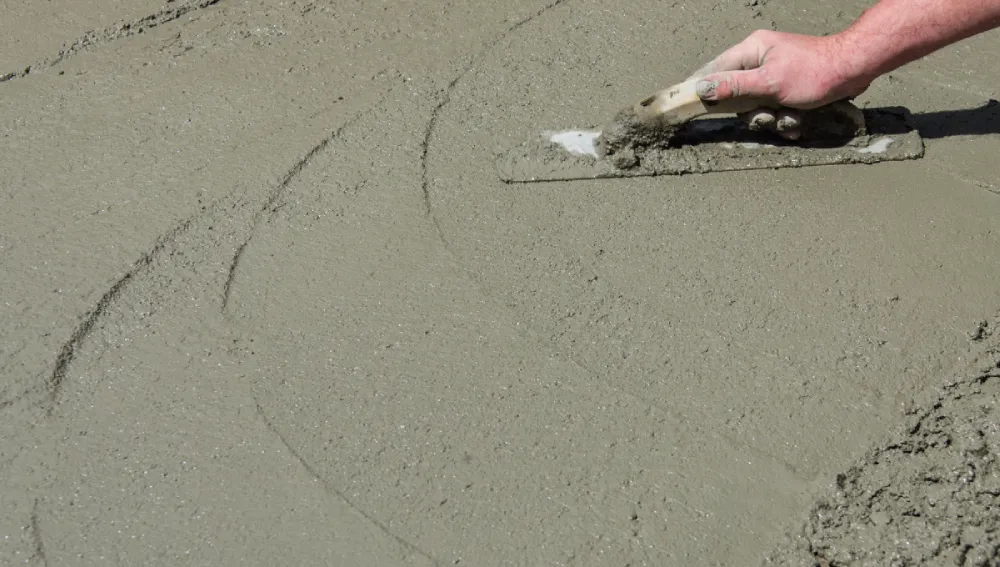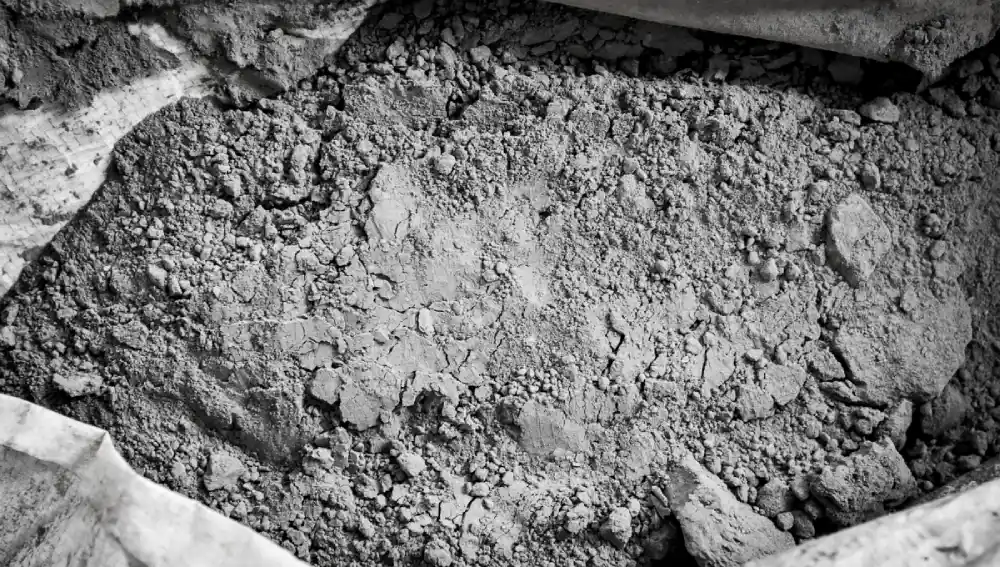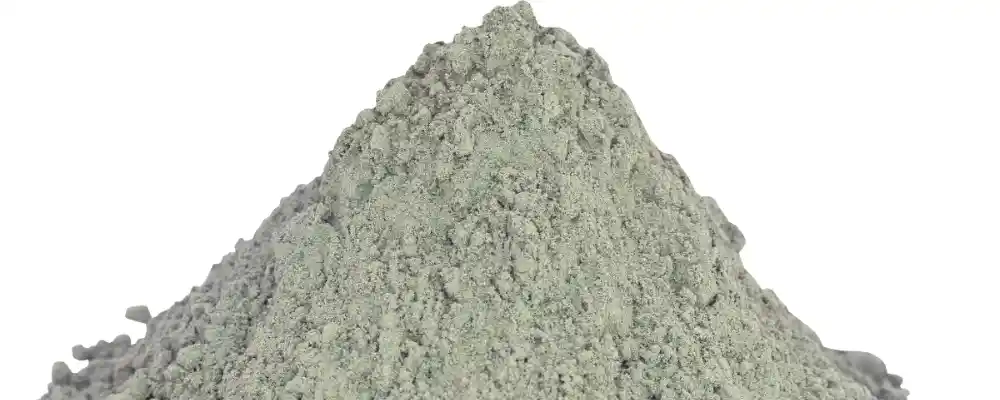What is the fineness of the cement?
The fineness of cement is defined as the measurement of the cement particle sizes and the specific surface area (SSA). It is usually calculated in square meters per kilogram and denoted as m²/kg. Cement fineness plays a crucial role in defining the factors that influence strength and quality.
Cement fineness influences and controls various cement properties. This includes the rate of evolution of heat, the rate of gain of strength, and the rate of hydration. The common value of the fineness of the cement is around 300–400 cm2/kg.
How to measure the fineness of cement?

There are two common methods used to determine the fineness of cement. They are, namely:
- The Blaine air permeability test
- The sieving method.
The Blaine air permeability test involves determining the specific surface area by measuring the fineness of hydraulic cement. The specific surface area is the total surface area of all the cement particles in one kilogram of cement. It is expressed in square meters. When the specific surface area is greater, the finer the cement is.can be.
The sieving process involves the cement sample being strained through a standard IS sieve. The weight of the cement molecules that are larger than 90 microns is determined. The total percentage of retained cement particles is then calculated. In general, the fineness value should be less than 10% for the construction cement.
W2 represents the weight of the cement that passes through the sieve with a particle size of 90 microns. Calculate the fineness using the formula:
Fineness = (W2/W1) * 100.
Factors Affecting the Fineness of Cement.

Grinding Process
The grinding process has a significant effect on the fineness of the cement. It controls the efficiency and has an impact on the final product of the cement. A variety of factors influence the desired cement particle size. It includes the type of mill, duration of grinding, and other grinding aids.
Clinker Composition
The chemical constituents of clinker are the cement’s primary ingredient. It affects how efficiently it can be ground to a chosen fineness. The types and ratios of minerals in the clinker affect the grinding process. Clinker is made up of four minerals that create strong mechanical bonds when reacting. These minerals are dicalcium silicate (20–25%), tricalcium silicate (50–60%), tricalcium ferro aluminate ((6–10%), and tricalcium aluminate (6–10%). These influence the durability and strength of the cement.
Cement Type
- Ordinary Portland Cement (OPC) usually requires finer grinding to achieve early strength and has a fineness ratio of 10%. It’s commonly used in building bridges, highways, and other structures.
- Rapid hardening cement, also known as High-Early Strength Portland Cement, has a fineness ratio of 3–5%. It gains strength faster than OPC, but its final strength is only slightly higher.
- Low-heat cement Has a fineness ratio of 5%. It’s similar to Portland cement but has a different chemical composition that generates less heat while setting.
- Portland Pozzolana Cement (PPC): A hydraulic cement made by mixing Portland cement with pozzolanic materials like fly ash or silica fume. It may need less grinding and fineness than OPC.
- Type II cement: Its fineness can be adjusted during grinding to reduce the heat of hydration. This is useful for mass pours like bridge abutments or dams.
Cement Storage Conditions
The requirements under which cement is stored influence its fineness. Inappropriate storage, such as exposure to water, can lead to clumping and cause an effect on the particle size distribution.
Cement Quality Control
Continuous quality control measures throughout the manufacturing process, including constant monitoring of grinding parameters and adherence to standards,are needed to achieve and maintain the desired fineness.
Limitations on the Fineness of Cement
- Particle size: The particles of the cement when sieved should not exceed 90 microns, following IS standards.
- Fineness modulus: The fineness modulus of cement is generally represented in percentage. It should not exceed 10%. In the case of >10%, it increases the rate of hydration and causes shrinkage, which makes it prone to react with alkali aggregators. This can cause cracking of the cement, expediting its deterioration.
- Specific surface area: The standard fineness of cement is generally obtained by measuring its specific surface area. It is typically around 300–400 square meters per kilogram.
- Grade requirements:
- 43-grade cement: required minimum fineness is 225 square meters per kilogram
- 53-grade cement: required minimum fineness is 370 square meters per kilogram
Factors affected by the fineness of cement.
- Hydration rate: The finer the particles of the cement, the faster it reacts with the water. The fineness helps to increase the rate of hydration. The surface area for hydration is relatively larger in the finer cement. This helps to speed up the process of developing strength. The particle size fraction below 3 microns has the biggest effect on one-day strength, while the 3–25 micron fraction has the biggest effect on 28-day strength.
- Strength gain: A larger surface area for hydration, will provide faster strength gain and development. Increased fineness of cement can provide a larger surface area. For example, in one study, the finest cement particles (C60) had a compressive strength of 57.4 MPa at 3 days, compared to 48.7 MPa for the coarsest particles (C30).
- Setting times: When compared to the coarser particles, the finer cement requires a shorter setting time due to less heat of hydration. Fineness affects the performance of the concrete.
- Workability: Finer cement can improve the workability of cement, but it may also need more mixing water to gain the required consistency. This could rather lead to increased shrinkage upon drying. To check whether the cement attained the proper consistency you need to do a cement consistency test
- Bleeding: Bleeding is defined as the separation of water from concrete. The solid materials in cement settle at the bottom of the surface due to gravitational pressure. This separates water and the solids of the cement. The fineness of cement can decrease bleeding in concrete. This is due to the slower rate of sedimentation process. The worst case of bleeding can be up to 20%.
Conclusion
The fineness has an important bearing on the cement. To achieve optimal performance, a proper understanding of the relationship between the fineness of the cement and the concrete properties is required. The fineness of the cement can make it easily blend with other components. It also provides better cohesion and adhesion between the components of the mortar. It is also crucial to know the calculated fineness of the cement. This helps to determine if the cement is finely grinded or not.

